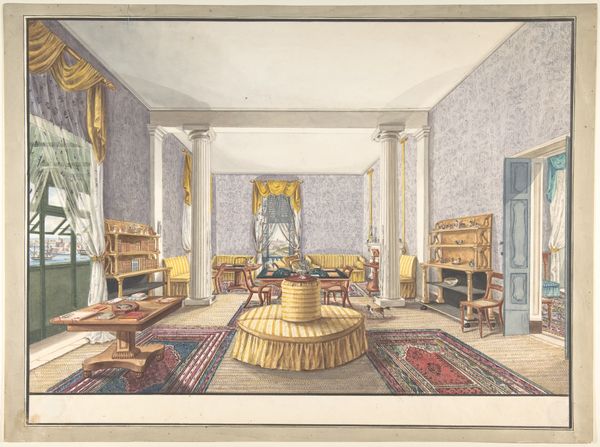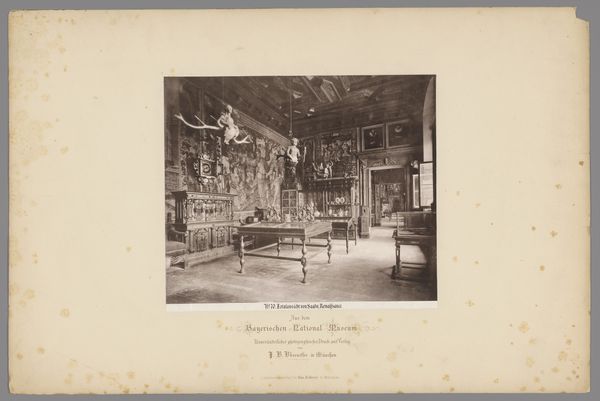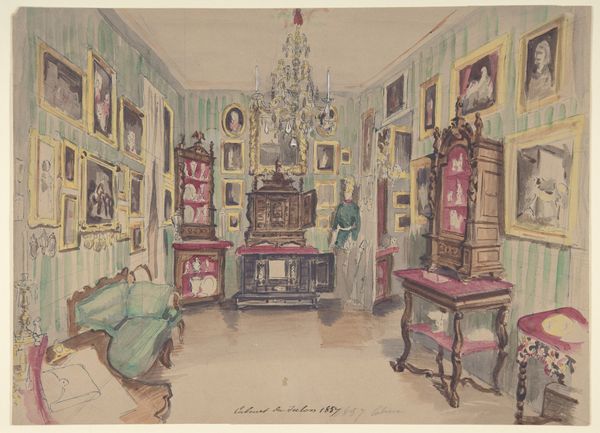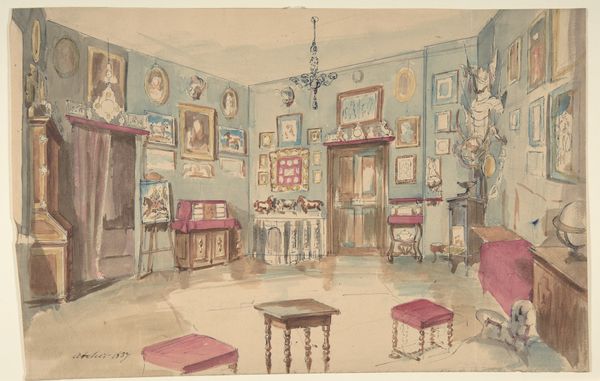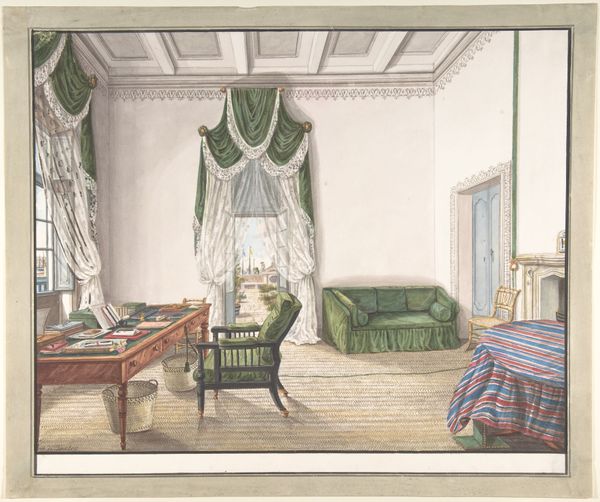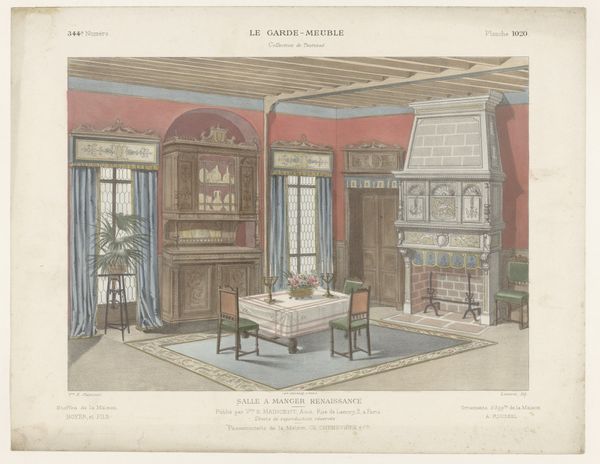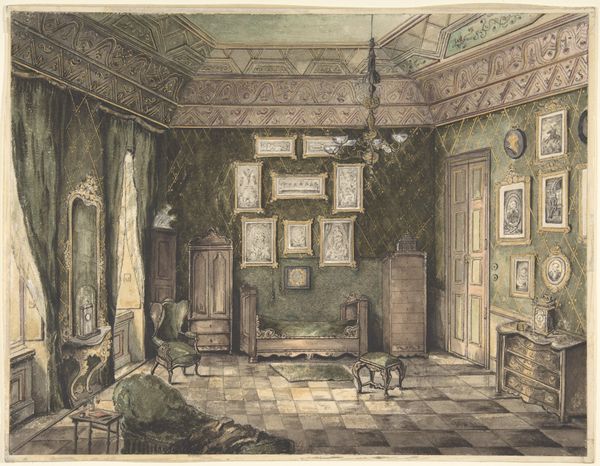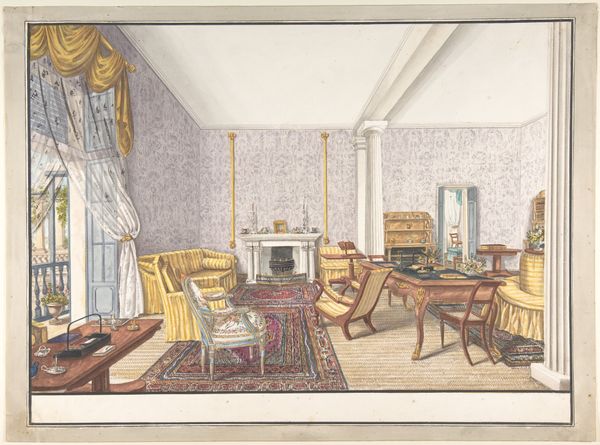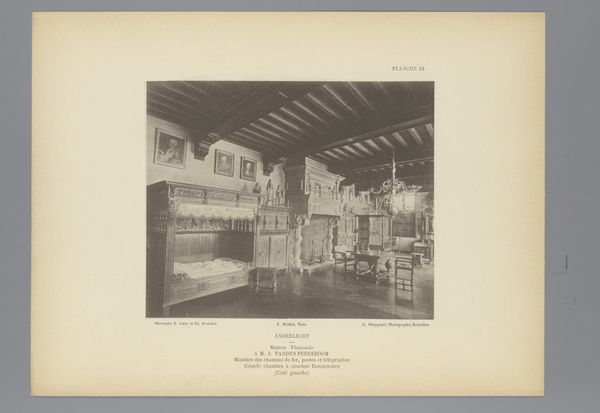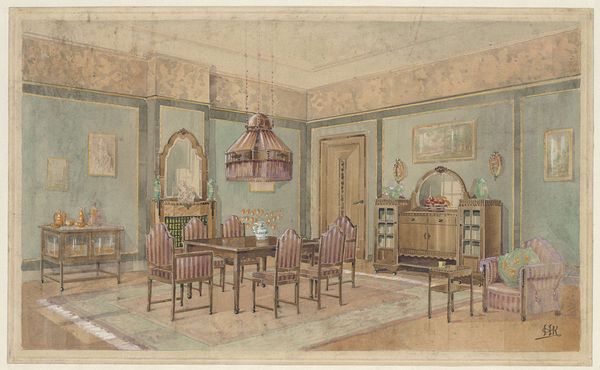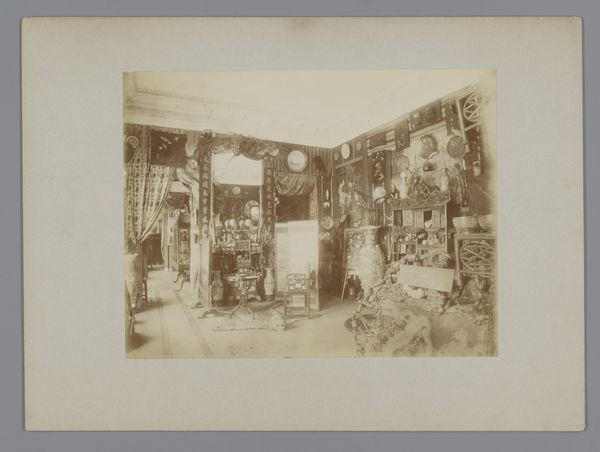
photography
#
photography
#
watercolor
#
indigenous-americas
Dimensions: height 88 mm, width 140 mm
Copyright: Rijks Museum: Open Domain
Curator: Wow, that light is something else. Makes the pottery glow like little moons. Editor: This photograph, dating back to around 1928, offers a glimpse inside what was known as an “Indian building” in Albuquerque, New Mexico. The photographer remains anonymous. It appears to capture a space designed to showcase and perhaps sell Indigenous crafts. Curator: The perspective feels staged, almost like a theater set. Everything carefully arranged for our viewing pleasure. Those rugs… and the pots, all lined up, little soldiers on parade. Is it trying to sell me something or teach me something? Editor: Both, perhaps. Buildings like these were often created along railway routes as curated marketplaces aimed at tourists. The design aesthetic, often referred to as “Orientalism” when applied to non-Western cultures, focused on curating and presenting what outsiders perceived as authentic cultural displays. The cactus centerpiece on the table feels rather deliberately… placed. Curator: Ah, like plucking a wildflower and sticking it in a vase! You bring up an interesting point about authenticity. As an artist, it feels almost intrusive, a visual excavation without permission. Editor: It's a complicated history. On one hand, it provided economic opportunities for Indigenous artisans. On the other, it reinforced stereotypical representations, reducing a diverse set of cultures to easily consumable objects for the white gaze. Curator: Makes me think of museums today, wrestling with repatriation and whose stories are being told and who controls that story. It seems the questions around visibility are still around. Editor: Precisely. This photo invites us to reflect on the power dynamics inherent in the act of observing and collecting cultural artifacts and the ethics surrounding how indigenous artistry is perceived and commodified. Curator: I suppose every brushstroke or camera click changes something a little… for the better and the worse. It's hard not to wish that these potters and rug weavers had agency over the camera lens here. Editor: And to reflect, finally, about what part do we play, simply by looking at this interior, or indeed anything through this camera lens today.
Comments
No comments
Be the first to comment and join the conversation on the ultimate creative platform.
